Exploring the Kaslo area – mountains, lakes, waterfalls and mining history
At about 11:00 on Day 23 of our RV trip – Friday, May 18th – we left Nakusp Hot Springs and headed southeast towards the historic community of Kaslo. We had no plans for an overnight stop – it would just be wherever looked appropriate.
At Nakusp, we stopped at the municipal campground and paid $5 to dump our tanks at the sani-dump. The fellow in charge spent 8 summers and 2 winters in the Yukon, and said that he loved the Yukon, and the Kootenays was the most similar place he could find without the long winters. He also told us that a couple of big events in Kaslo could make finding a place to stay tough.
We ended up driving 123 km in the RV this day, to an RV park 17 km past Kaslo. I haven’t shown you a map for a while, so here’s this day’s route – as always, click here to open an interactive version of the map in a new window. I’m still tracking with inReach, and our entire route with very detailed maps (except for the occasional gap when I forget to turn it on) can be seen at https://share.garmin.com/MurrayLundberg.
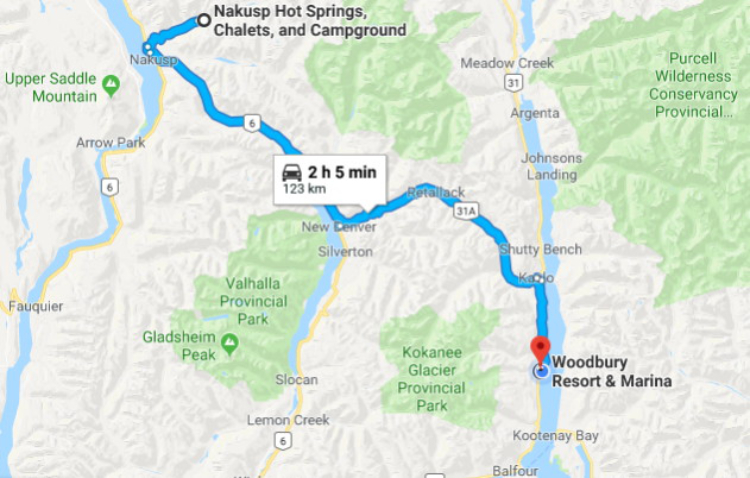
At 1:15, we stopped for a snack at a pullout among the high mountains along Highway 31A between New Denver and Kaslo. There are very few pullouts along the highways in the Kootenays unfortunately, as there were a few places I would have liked to stop, for views or old mines.

A huge network of beaver dams added a lot of interest to the view forward (to the east) at the pullout. We didn’t see any beaver, but there were a few geese and ducks.
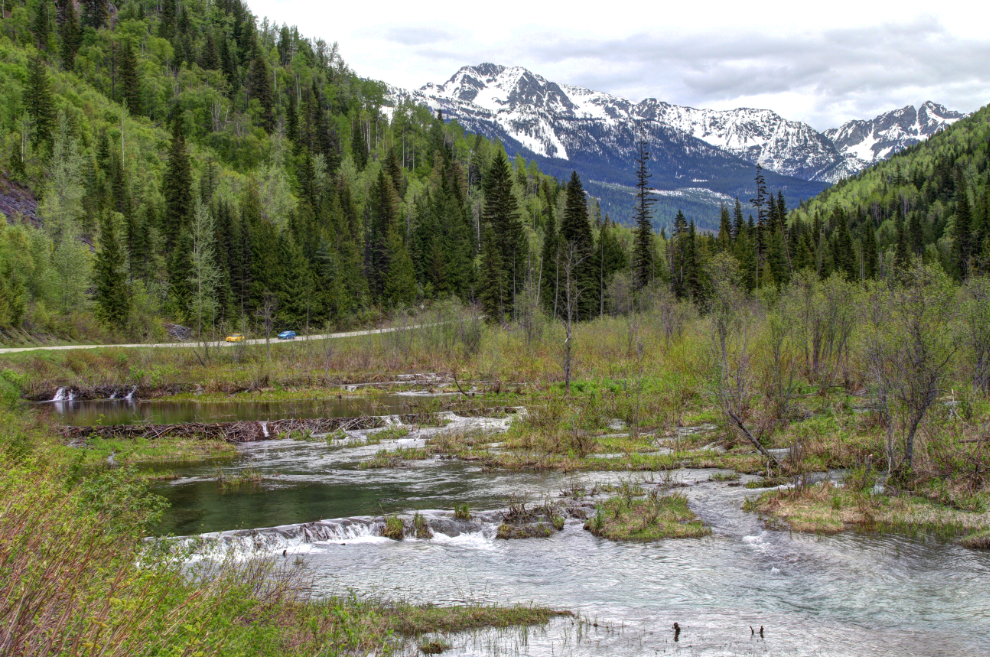
Behind us, there was another old mine on the opposite side of the narrow valley. Between mines, railroad grades and wagon trails, I could spent a lot of time along this road, and we’re already talking about doing exactly that next year.
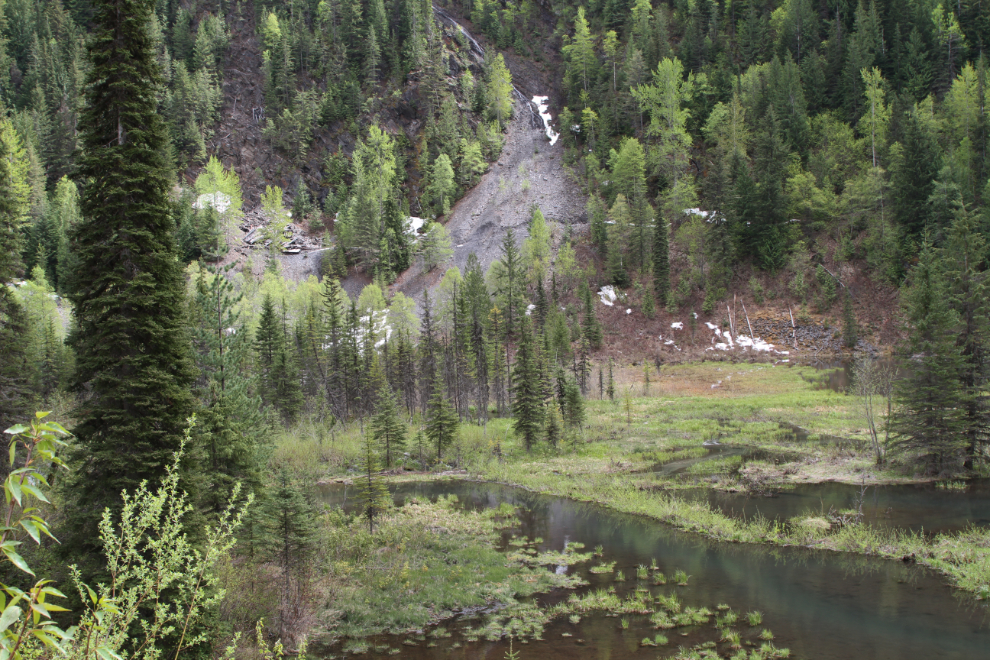
We decided to go into Kaslo for a quick look, and to talk to the people at the visitor centre about a possible overnight stay. We pretty much immediately knew that this would be a 2-night stay – Kaslo has a great feeling to it, and there are particularly fine heritage buildings everywhere.
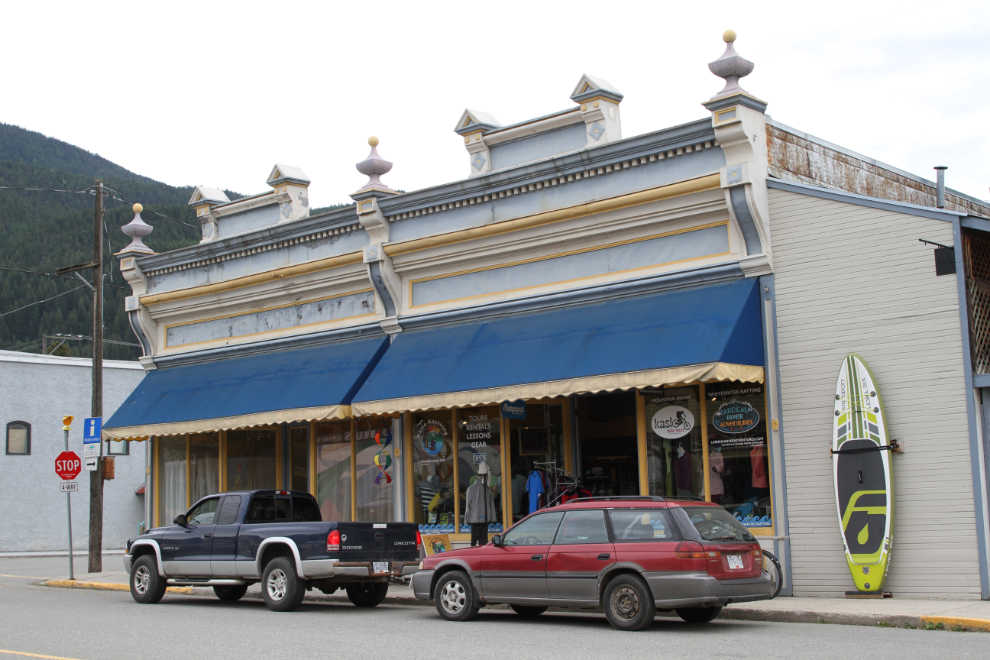
I had made a short visit to Kaslo in about 1970, but was surprised at how large the town is. The 2016 population was only 968, and there were 555 private homes, so it looks like more, particularly when the number of people on the street is welled by special events.
The Canadian Pacific sternwheeler Moyie was really the only thing I remembered about Kaslo from almost 50 years ago. We’d return for a tour through it, but our visit to the visitor centre was short and productive – the Woodbury Resort & Marina south of town looked like a good spot for us.
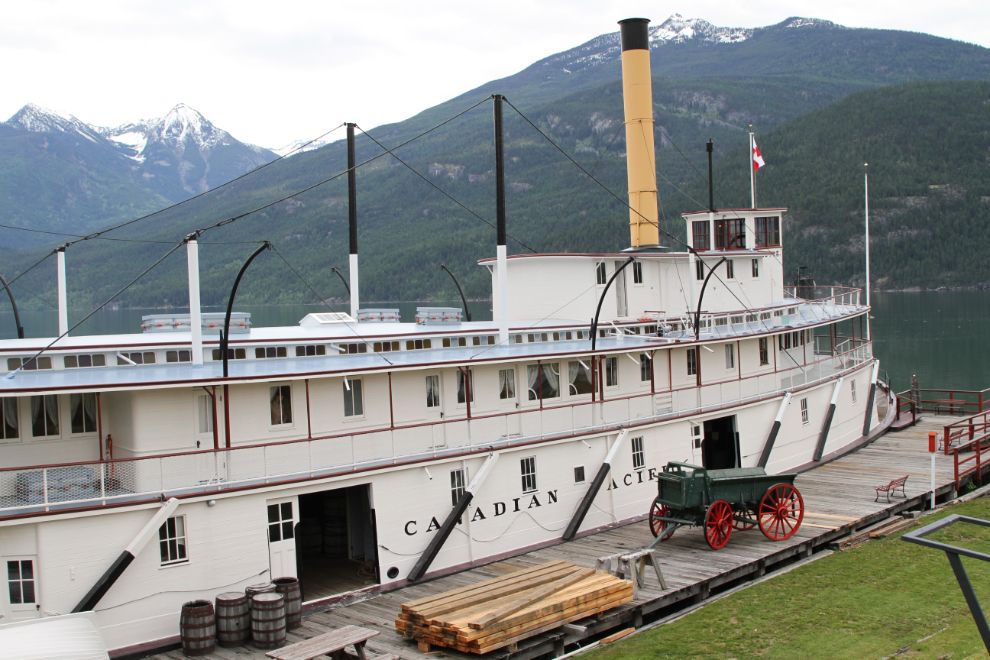
By about 4:00, we were set up in pull-through site #108. It turned out to be one of the few overnight RV sites at Woodbury – most of the 100+ sites have RVs permanently in place for full-time or seasonal residents. The cost for 2 nights was $73.50 included taxes. The next photo shows the view out our front view, looking across Kootenay Lake
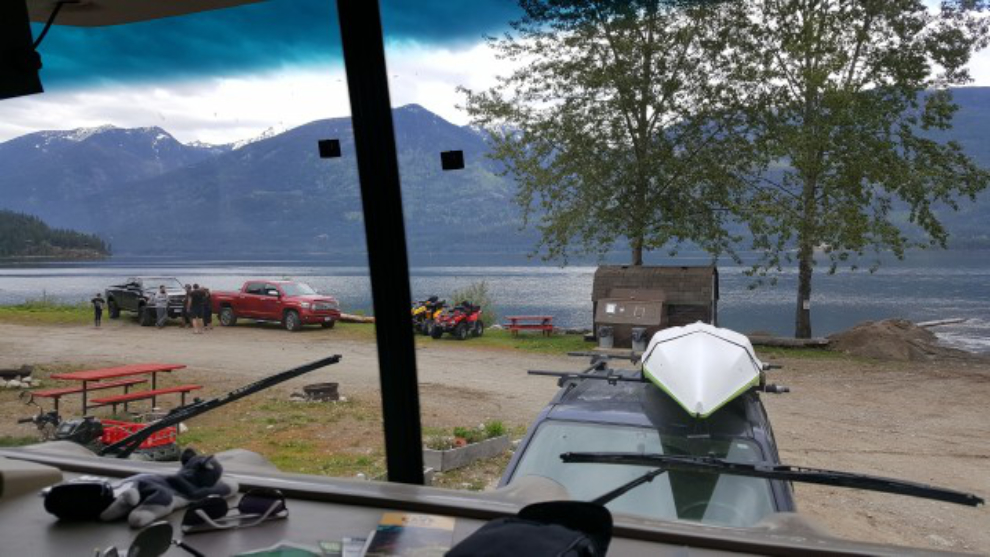
With a fairly well-used hummingbird feeder 3 feet from her favourite bed and window in the motorhome, Molly was well entertained for the duration of our stay at Woodbury 🙂
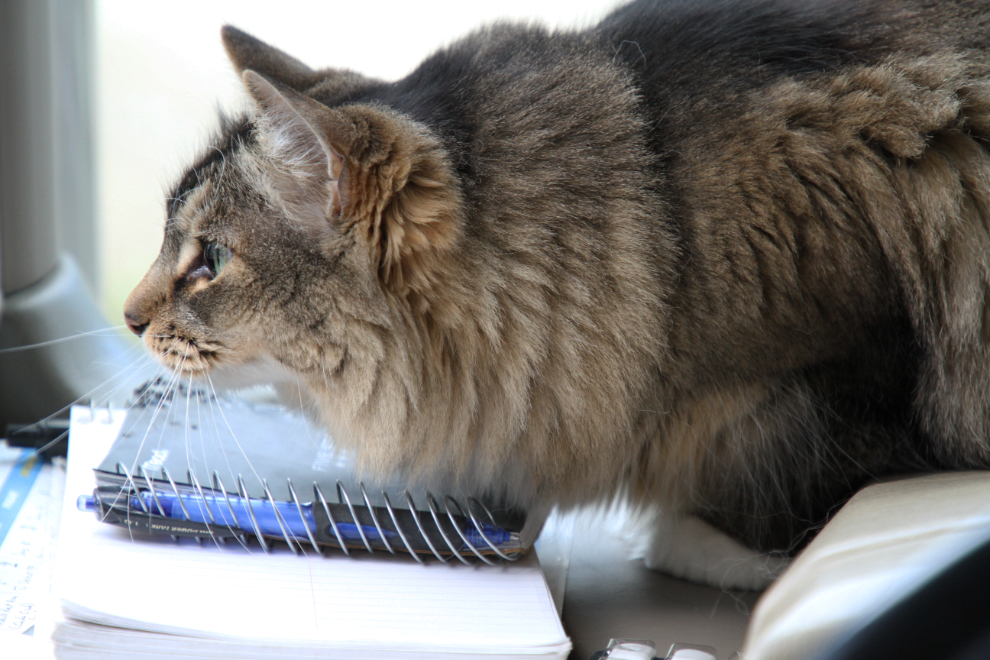
Our RV site was a bit tight, but with a view like that, we didn’t really care.
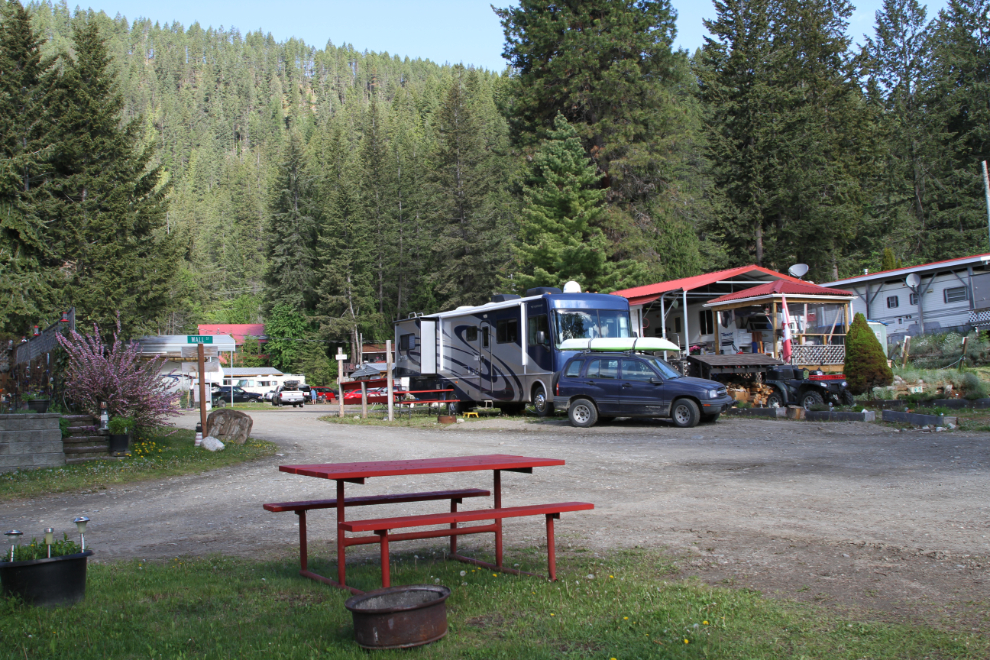
Despite being controlled by two dams and a 1938 international convention on acceptable levels, Kootenay Lake is very high, and the resort is bringing a lot of sand and gravel in to deal with it. As of this morning, a record high water level on the lake is expected to be reached within 10 days – while that sounds bad, that record will be about 2½ inches higher than it is currently.
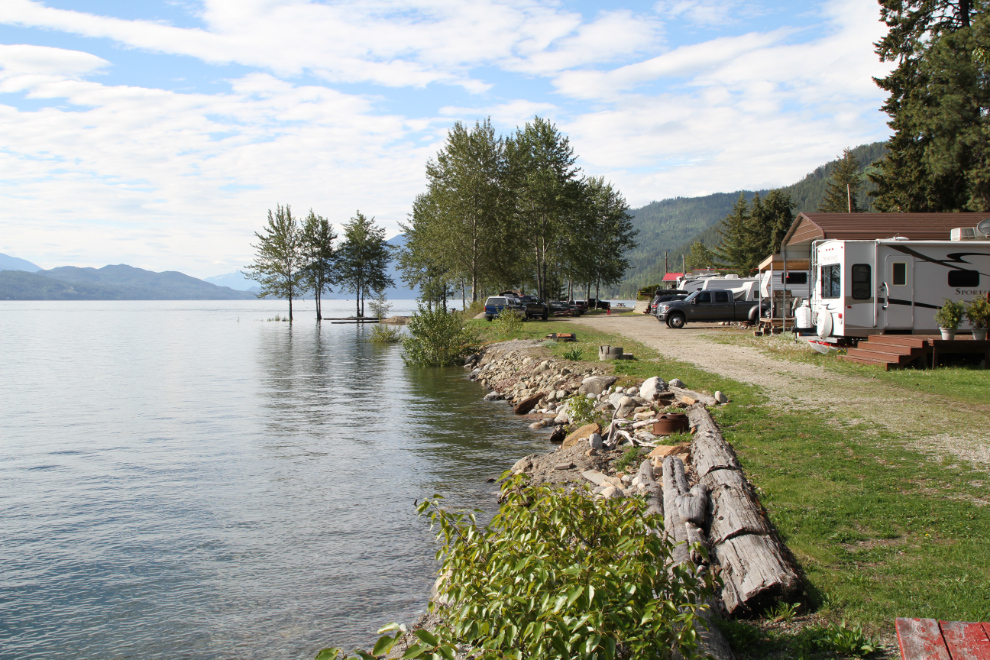
There are are lot of dogs at Woodbury – some aren’t very friendly, and some owners don’t bother picking up after theirs. We found a decent area to walk Bella and Tucker, though – this is looking back at the main part of the park from where we go.
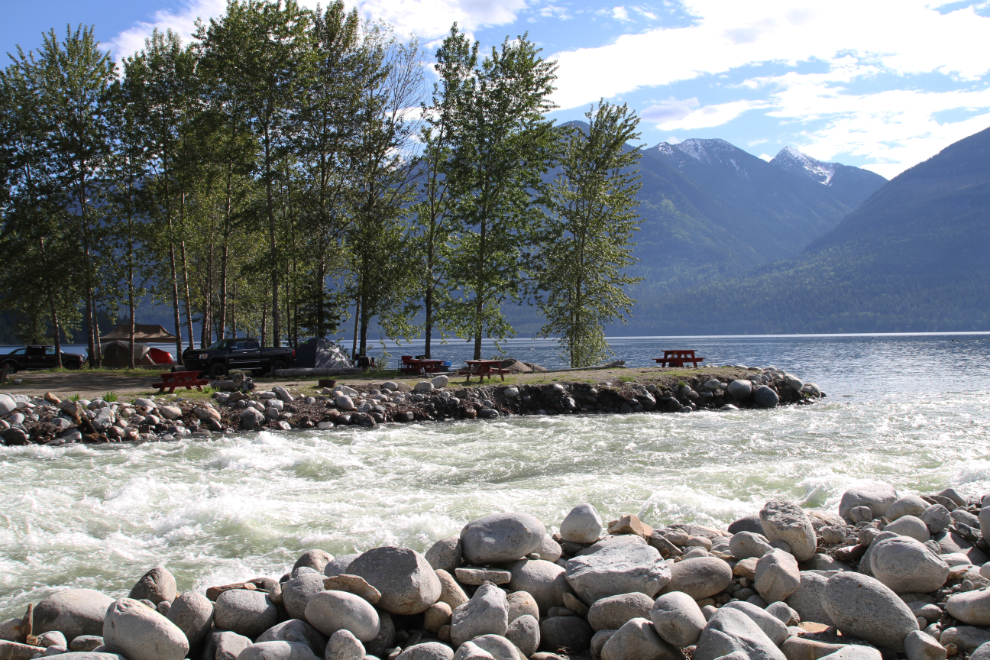
On Saturday, we began our exploring of the Kaslo area at Fletcher Falls. I didn’t have high hopes for this to be very scenic, particularly when I saw Fletcher Creek coming out from a culvert under the highway, but I was soon proved wrong. The amount of spray becoming created and exploding out of the canyon was amazing – I had to clean the camera lens after every shot.

The trail leads to a viewing platform near the base of the falls. From here, the overhanging cliffs are almost as impressive as the waterfall.
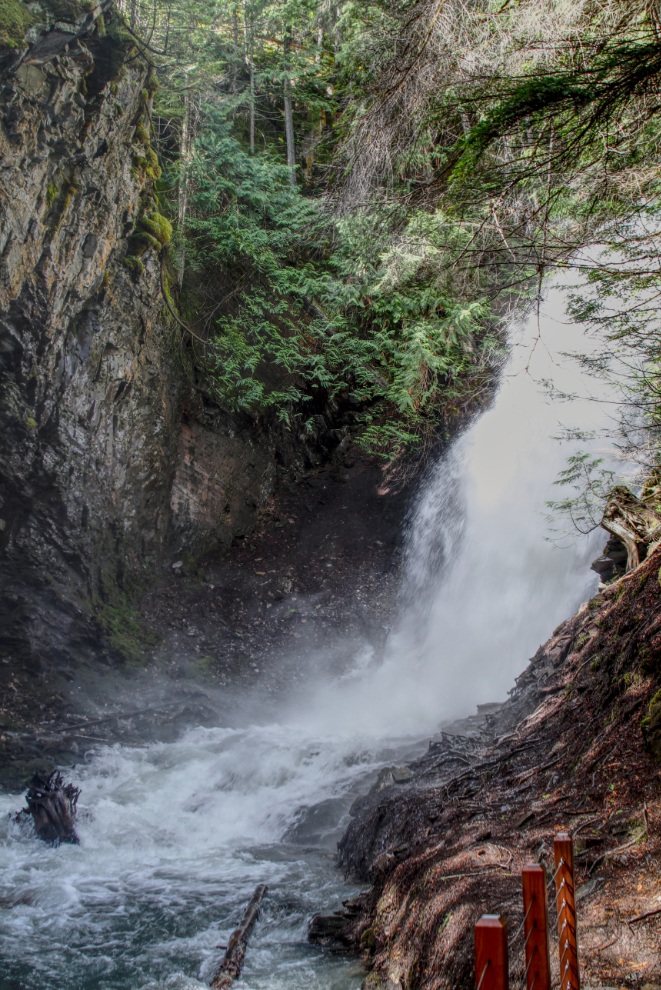
Lit by shafts of sunlight, the spray from the waterfall also offered plenty of photo opportunities.
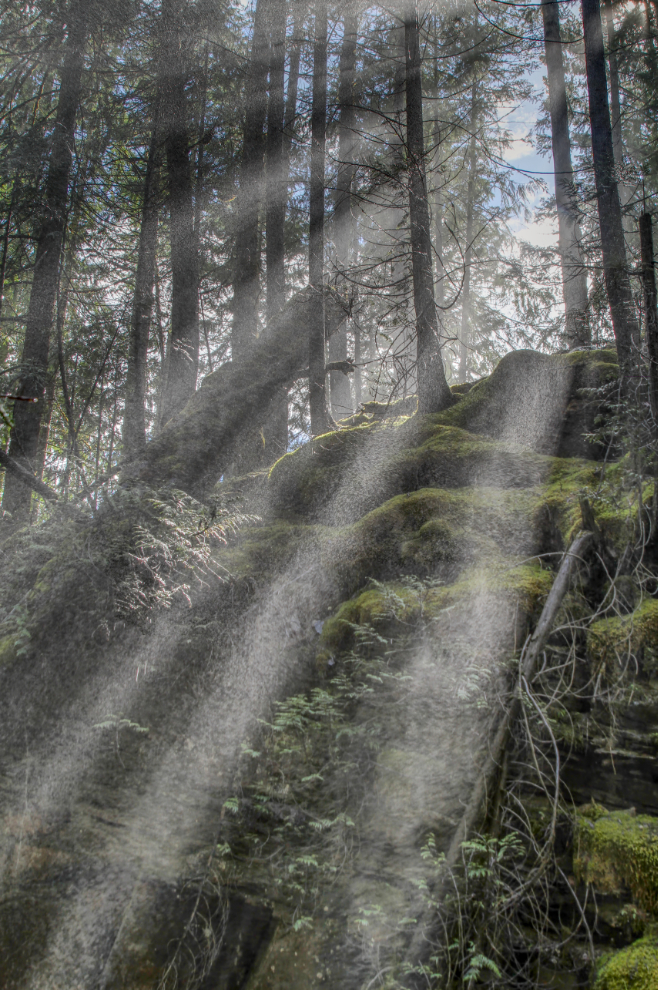
A bridge leads across Fletcher Creek to the waterfall viewing deck, and the day-use area of Fletcher Falls Recreation Area.
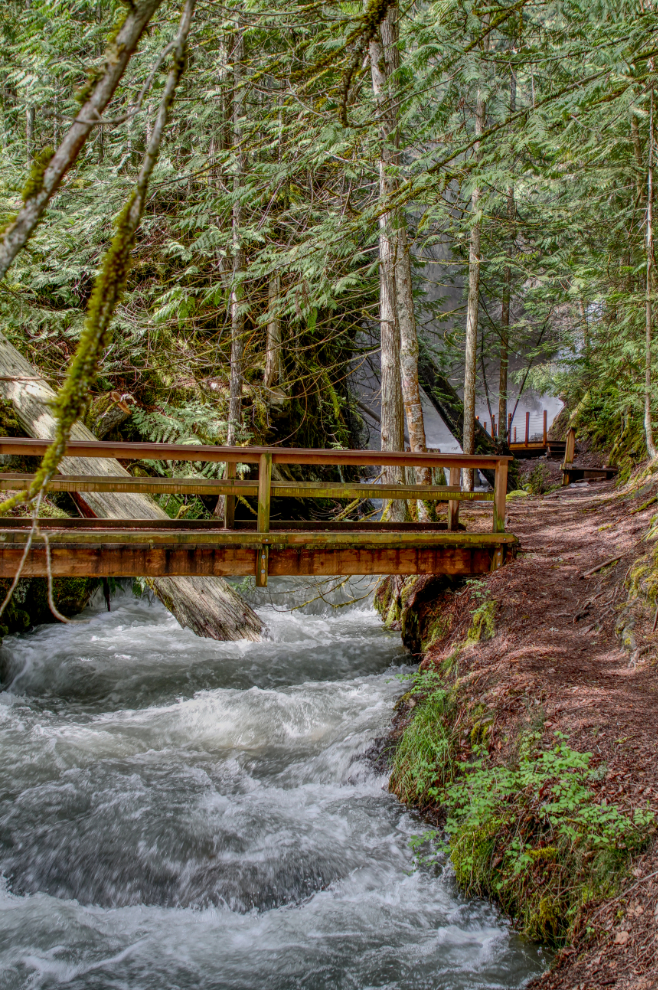
The very high water levels on Kootenay Lake have greatly reduced the size of the beach at Fletcher Falls Recreation Area, but the camping area is high and dry, and 3 groups were camped there.
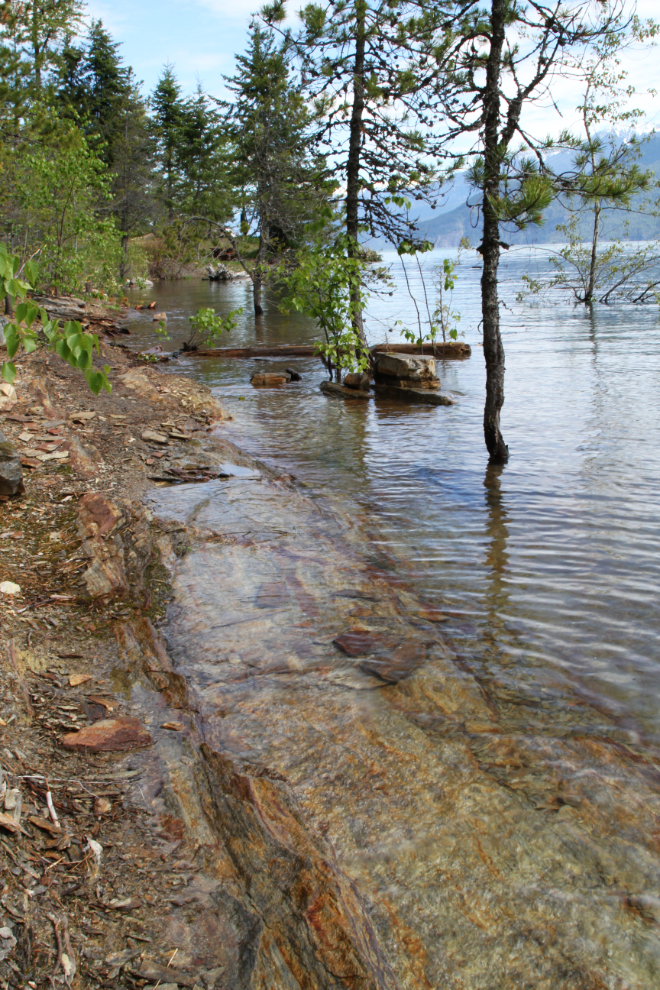
From Fletcher Falls, we backtracked west on Highway 3A to see if we could reach Buchanan Lookout. It’s one of five retired forest fire lookout towers that were restored as recreation destinations for the BC Forest Service’s centennial anniversary in 2012. With lots of snow still visible on the peaks, it’s position at 1,912 metres (6,272 feet) on Mount Buchanan made reaching it unlikely, but the road would no doubt be interesting in any case.
The road is said to be suitable for high-clearance 2-wheel-drive vehicles, but having 4-wheel-drive is much better. The road does offer some great views.
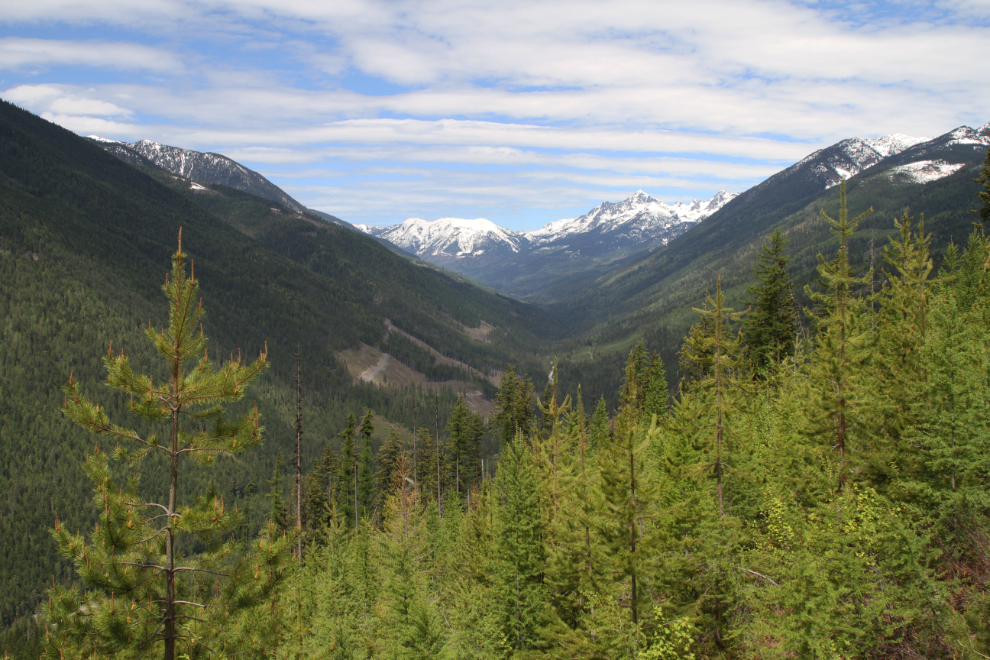
Just past the 7-km marker on the 12-km road, we came to impassable snow. I walked up the road a bit, but the snow was too deep and soft to go far. There was a switchback with a large area to turn around just 100 meters back, so the location to have to turn back was good.
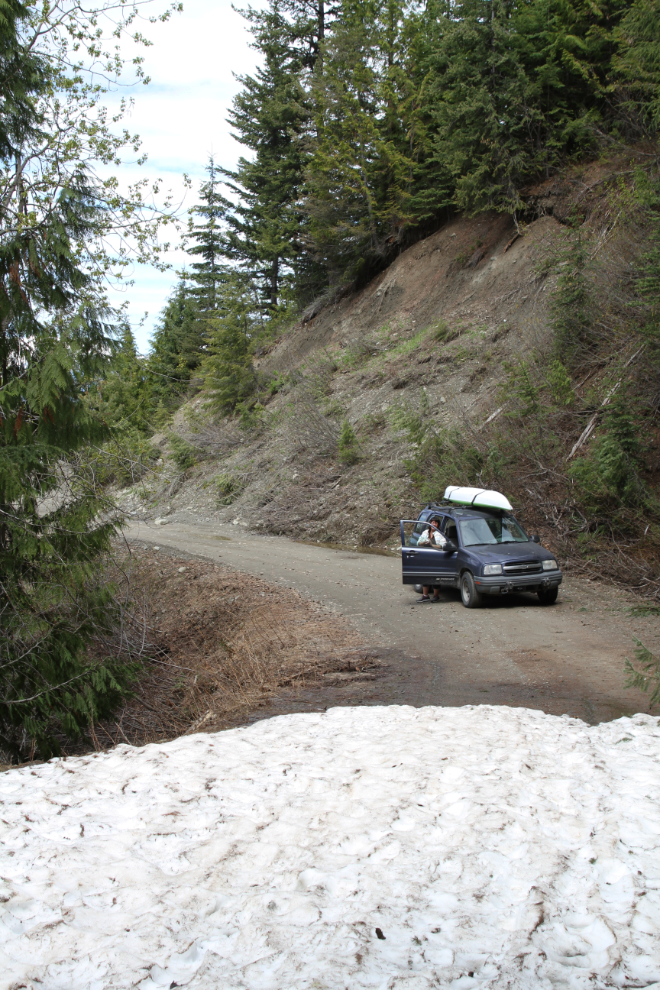
The view ahead on the way down. From this vantage point we could see that there are logging and mining roads everywhere – for a backroads explorer, this is pretty incredible country.

Near the bottom of the Buchanan Lookout road, I took Bella and Tucker for a long walk on what is signed as being the old Sandon-Kaslo Wagon Road, though I have my doubts abot the accuracy of that. It’s quite steep in places, and I found a section of a very old, overgrown road that has a much easier grade.
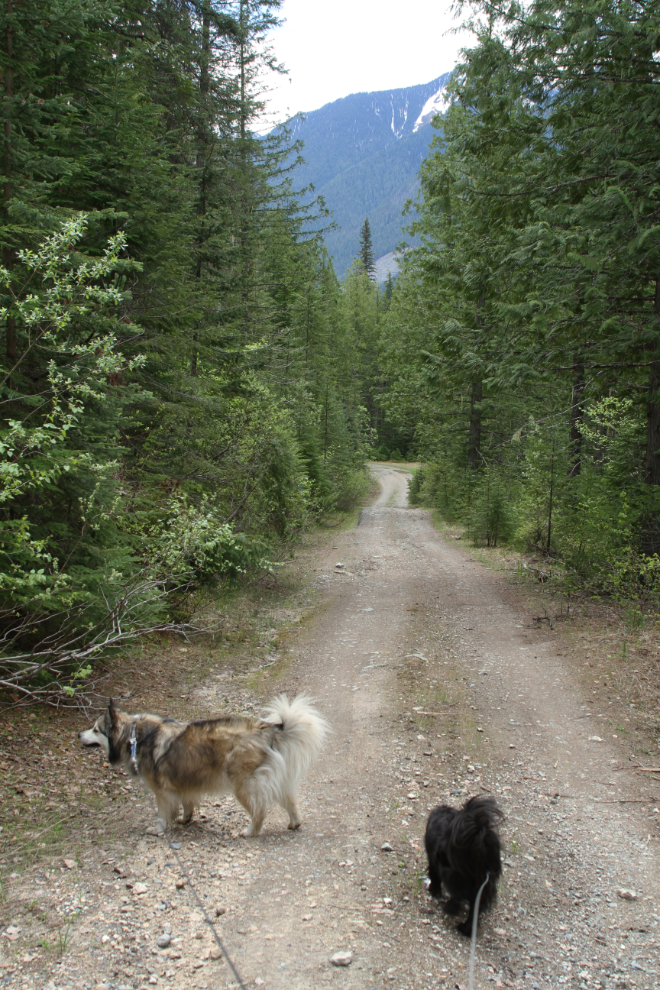
Back at Highway 3A, we turned west to continue exploring. This pullout at a section of the old Kaslo & Slocan Railroad (K&SRR) looked like it had possibilities, but as soon as I stopped, I saw that the trail was still deep in snow. An interpretive panel says that the railway only operated from 1895 until 1910 when fire wiped it out (a large forest fire, I assume).
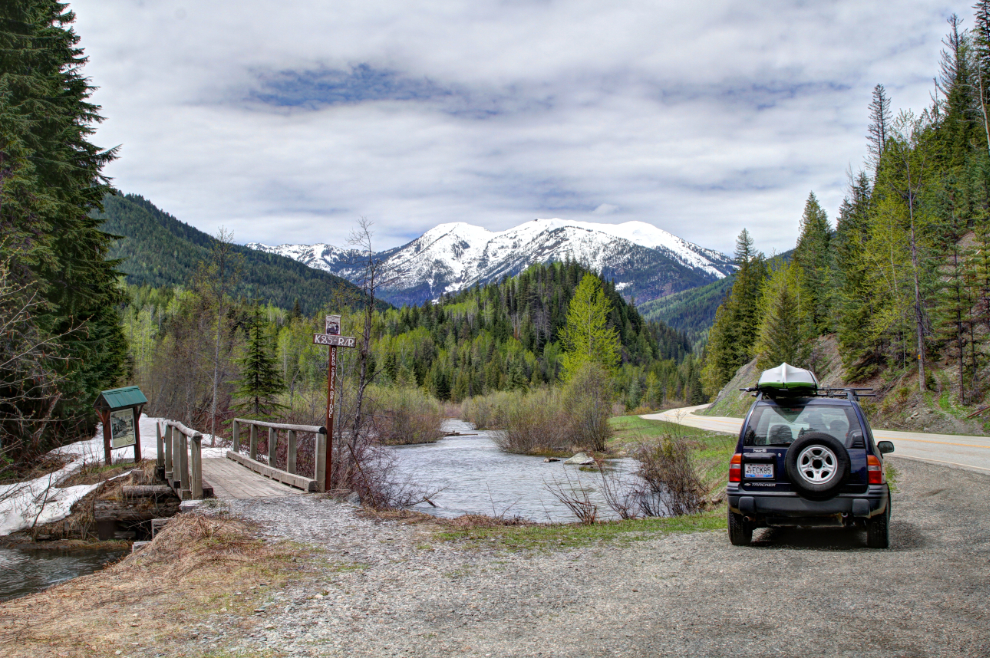
While the K&SRR pullout didn’t offer any hiking, it did provide a great location for a family portrait. Well, a most-of-the-family portrait – I need to set up one with Molly included to get it right.
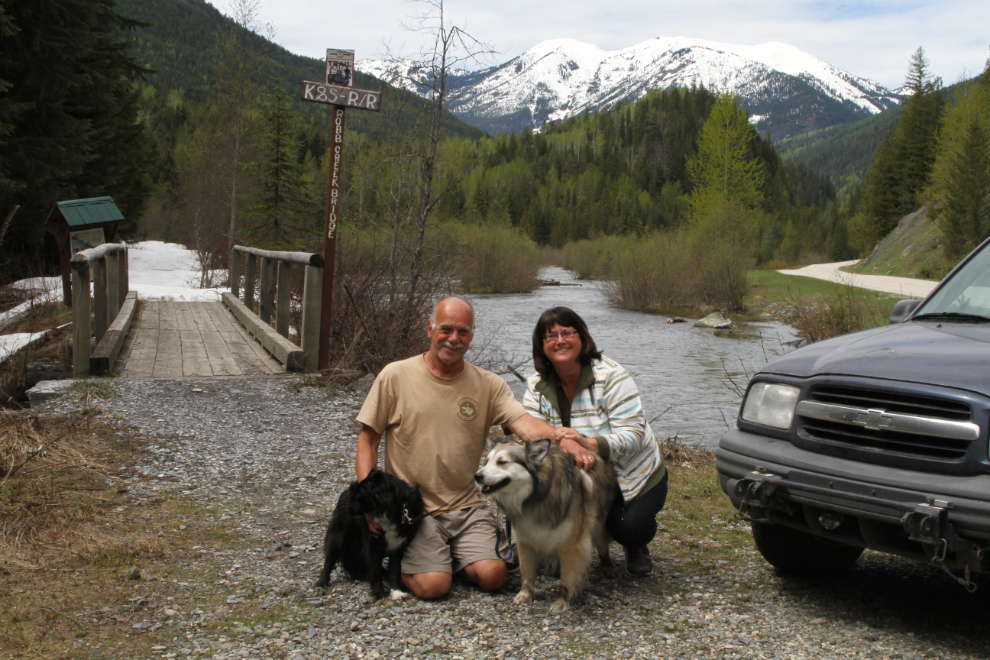
We went back to the RV park and dropped Bella and Tucker off, then returned to Kaslo for a pub late-lunch at about 3:00 pm. Angry Hen Brewing gets great reviews and the location close to the steamboat Moyie was perfect for after-lunch plans. Angry Hen Brewing is a great example of businesses working together instead of fighting. They supply excellent beers in a very comfortable setting (we lucked into live music, too), and they welcome you to bring in some of the excellent food from neighbouring businesses (or from home, I suppose). Our burgers from BlueBelle Bistro next door were very good, and they delivered 🙂
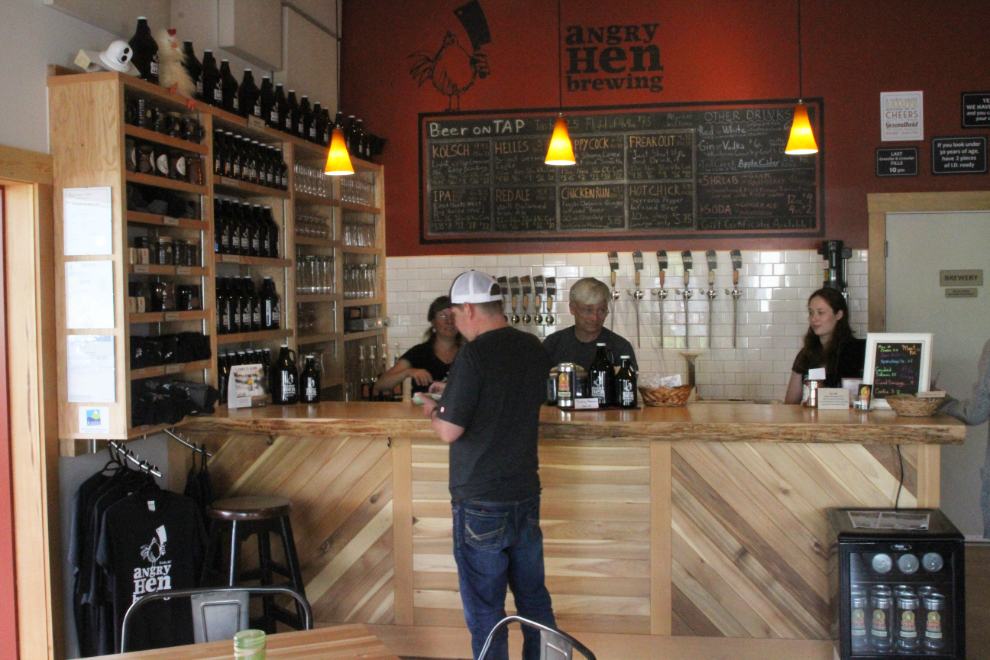
Our final plan for the day was to go through the S.S. Moyie, the oldest intact passenger sternwheeler in the world. The S.S. Moyie National Historic Site is operated by the Kootenay Lake Historical Society, and admission is $12 for adults and $10 for seniors. After editing there are 53 photos in my Moyie folder but I’ll only show you 7 🙂
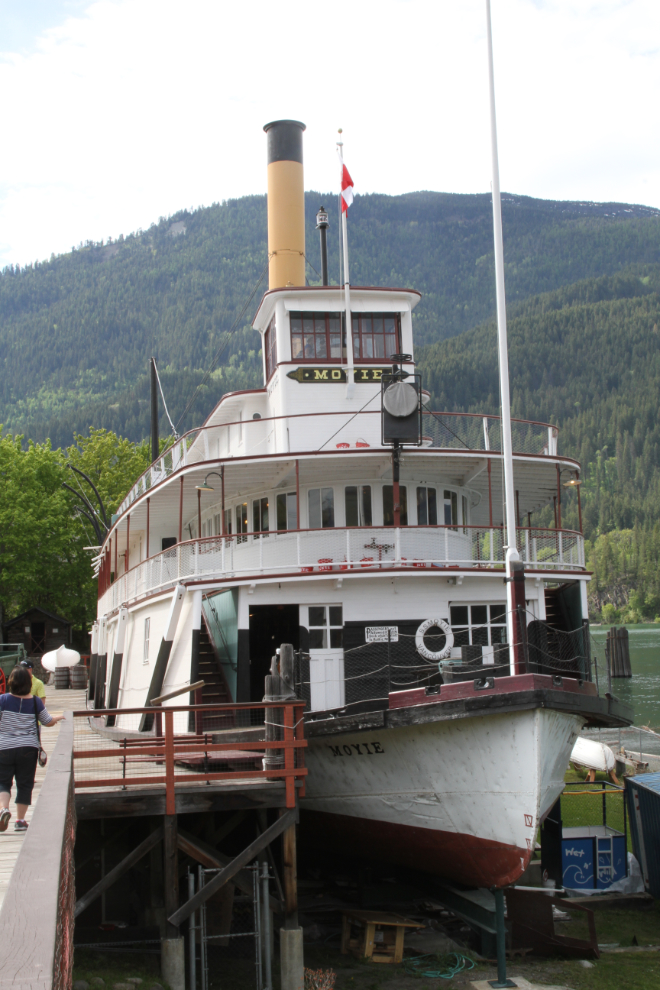
The Moyie was built in Nelson for the Canadian Pacific Railway in 1898. She’s 161.7 feet long and 30.1 feet wide, and would normally carry 250 passengers, though 400 was her licenced capacity. She operated until 1957 – with lake traffic much reduced and a major overhaul due, keeping her in operation wasn’t economically viable.
This is the men’s smoking room, forward on the saloon deck. This was generally the noisiest place on the boat, with miners, prospectors, loggers, salesmen, and tourists drinking, playing card and just generally socializing.
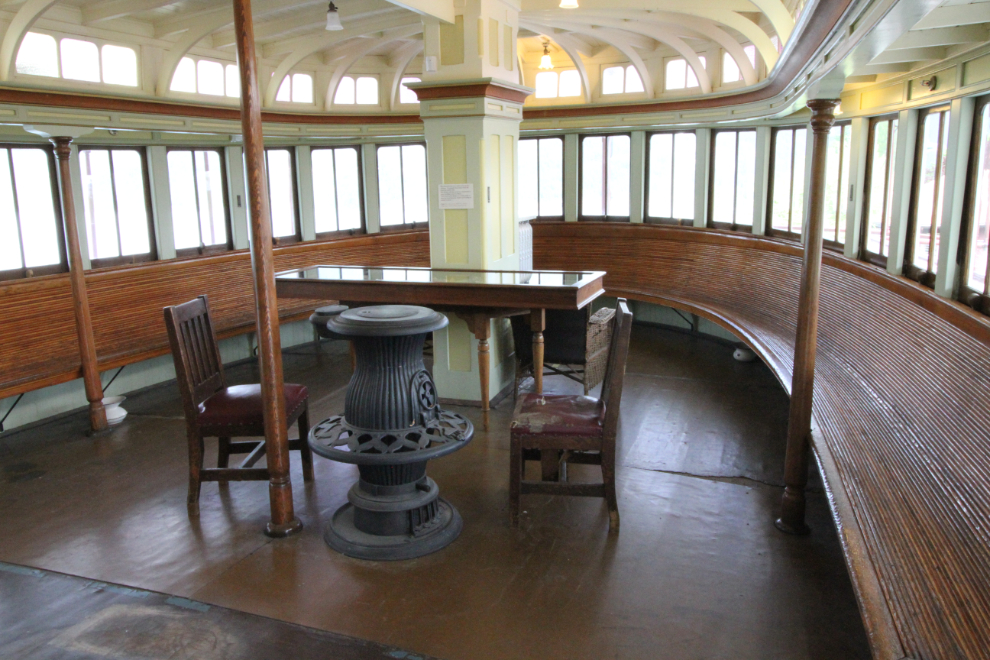
We were quickly struck by how different the Moyie is than the surviving Yukon boats, the Klondike and Keno. Although very similar, the layout is different and the finishing is more fancy. This pantry is beside the dining saloon, between the men’s smoking room and the ladies’ saloon.
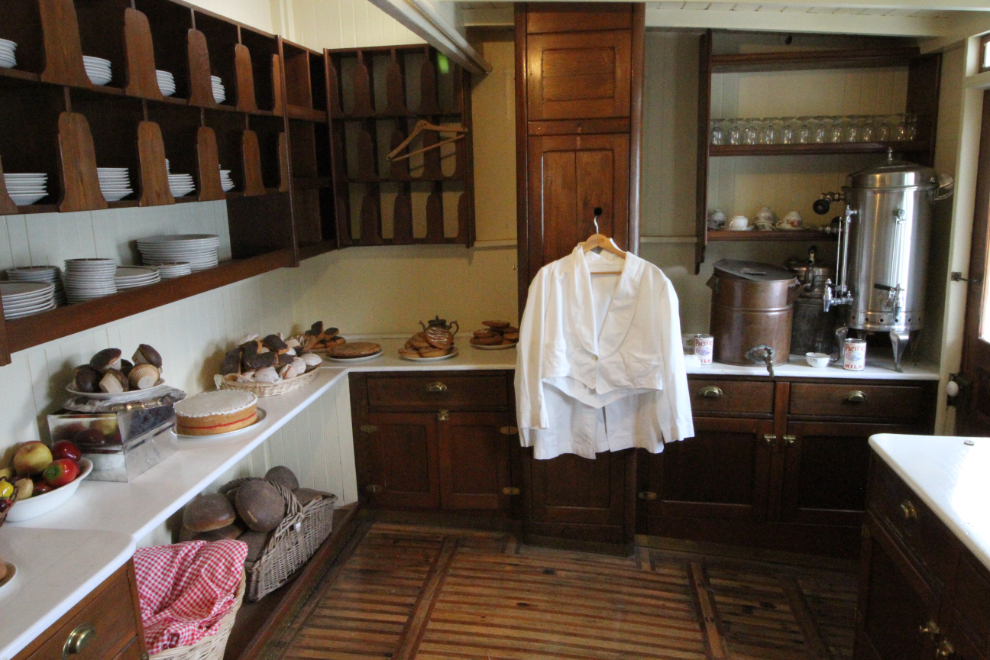
Included in the fancy detailing such as this emblem above the dining room was gold leaf stencilling – painters dusted powdered goldleaf onto linseed oil. During the restoration, these were discovered under layers of white paint.
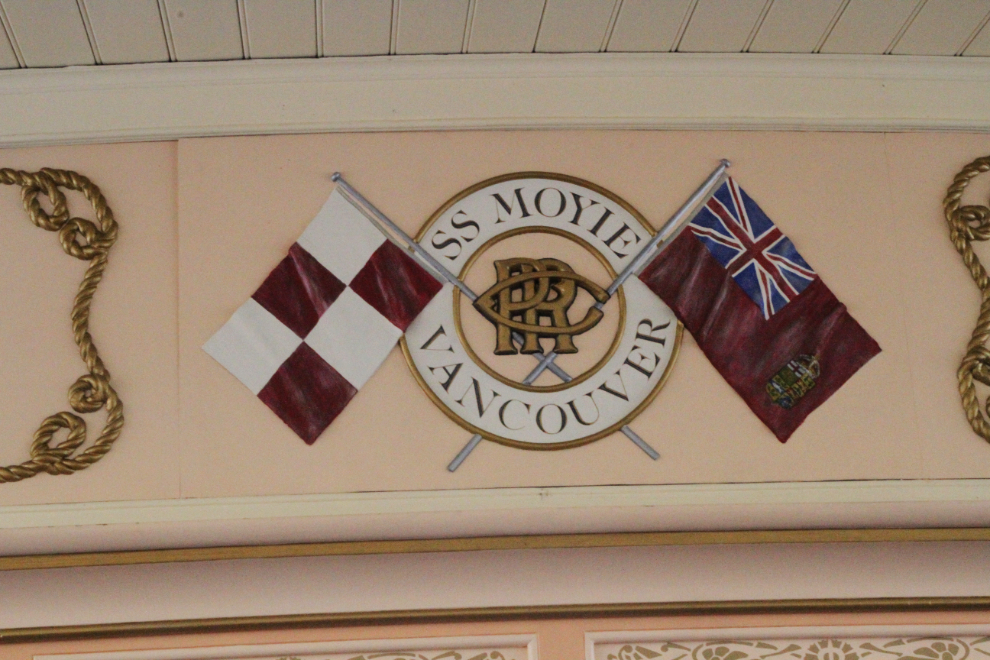
The wheelhouse and forward lounge are always my favourite parts of any boat tour. What an experience it would have been to captain one of the magnificent boats, or even to sail on one in the early days.
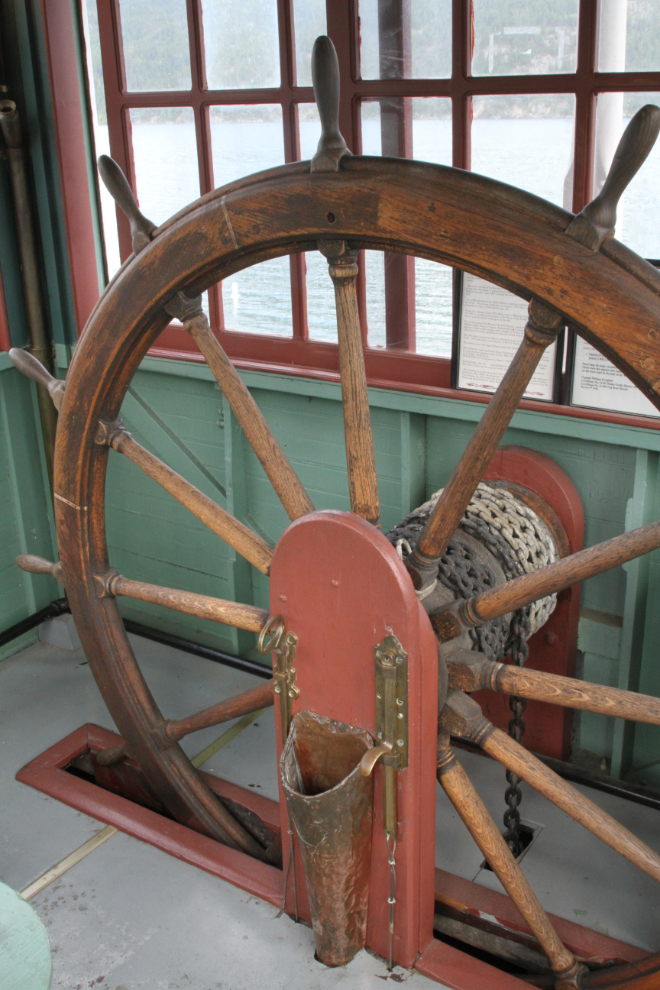
The freight deck is particularly well set up, with a wide variety of stuff including vehicles – a car, a chicken-laden truck, and a horse-drawn fire ladder-truck. The Moyie really is a must-see if you get to Kaslo.
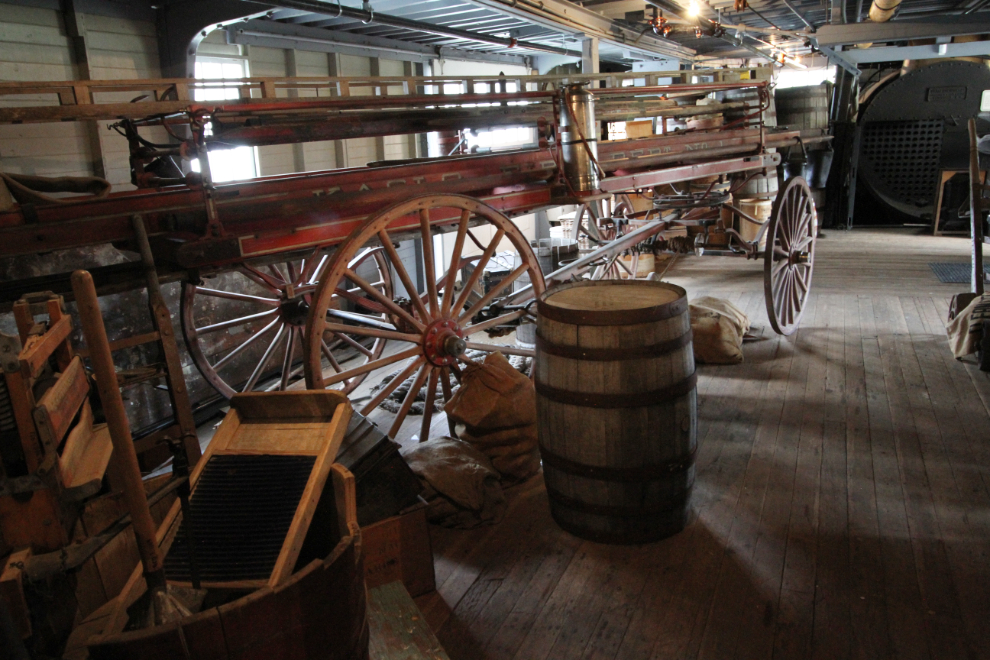
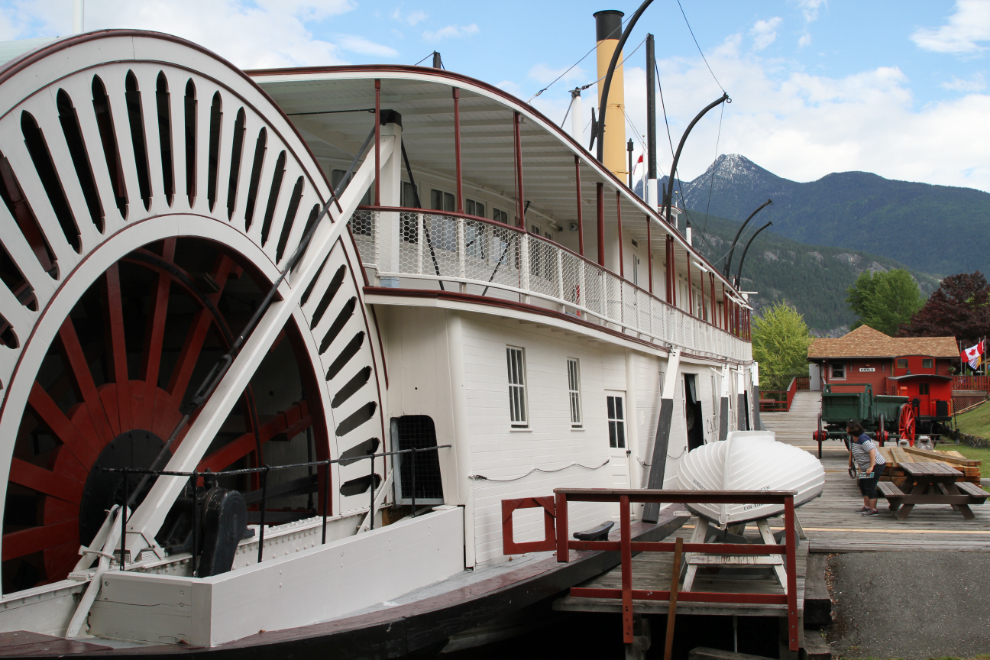
The 16-km drive from the RV park back to Kaslo is definitely not hard to take!

Although it was old cars and engines that took me back into Kaslo, I wasn’t nearly finished with old buildings, either. The City Hall, built in 1898, is a good example of what’s there.
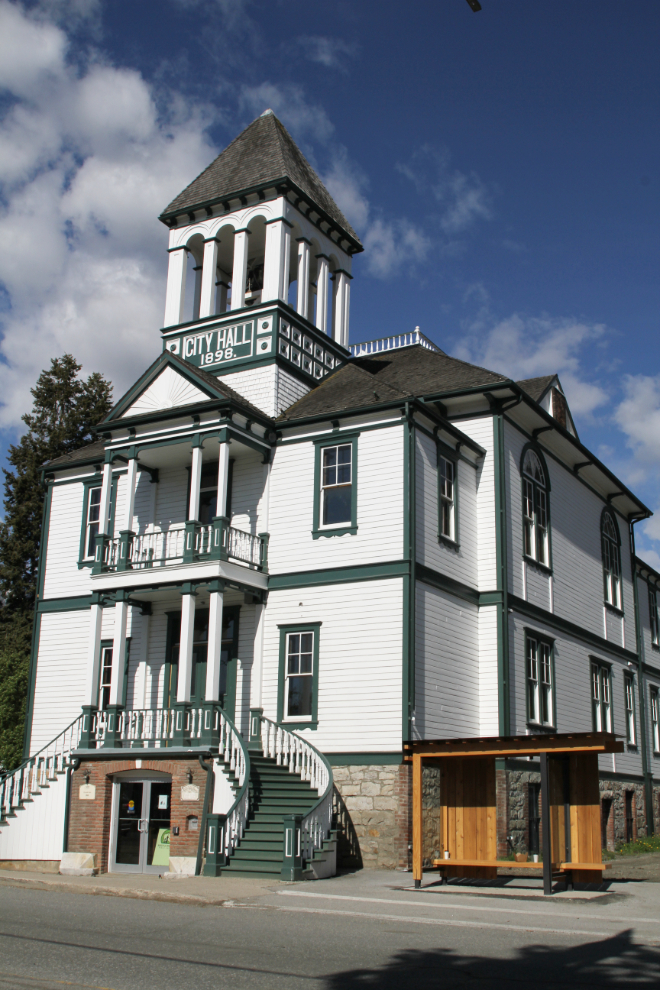
Car shows used to be a very big part of my life. I go to the odd one in Whitehorse now, but never miss an opportunity to see what’s on the road in other communities.

There were some gorgeous cars in Kaslo, from restorations to mild and wild customs. This wild chopped and flamed Merc was one of my favourites.
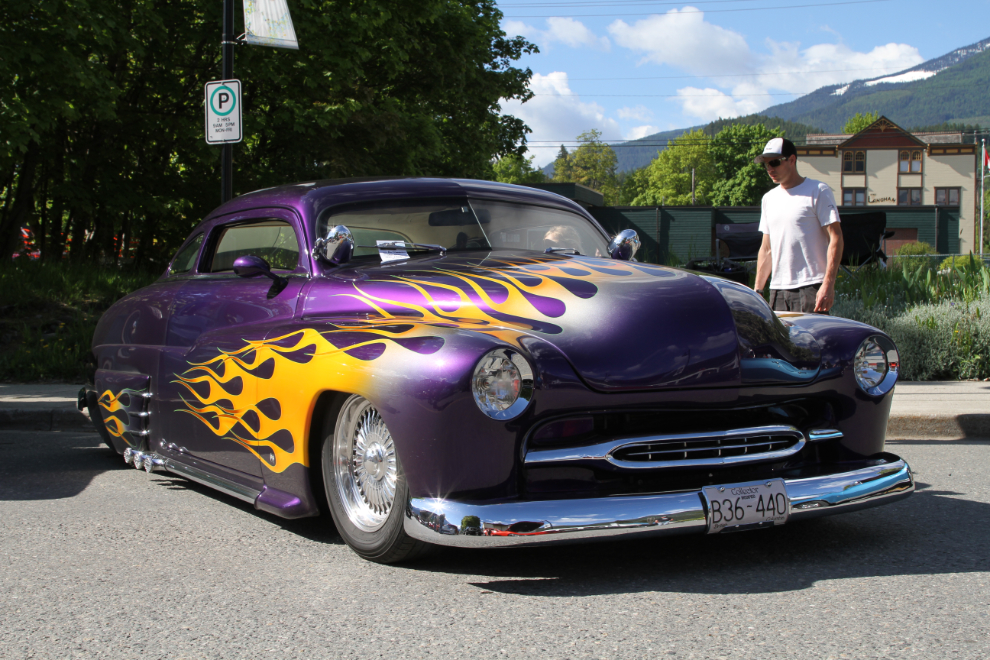
For the hour plus that I was there, cars and light trucks of all vintages just kept coming. There were about 80 when I left just after 10:00.
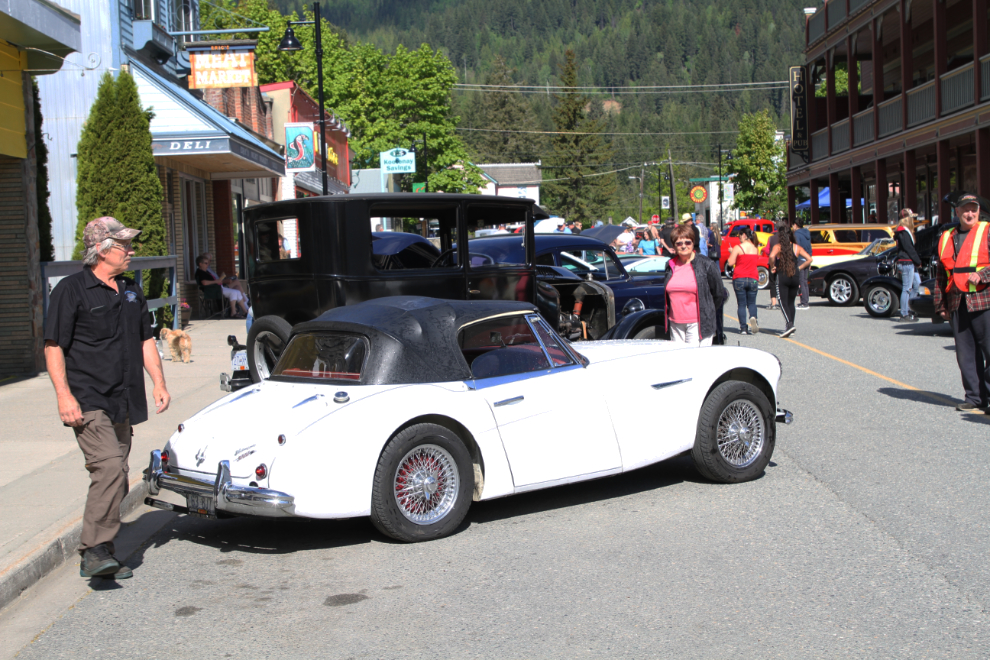
On a side street, a few guys whose passion is old engines of all sizes were putting on a show.
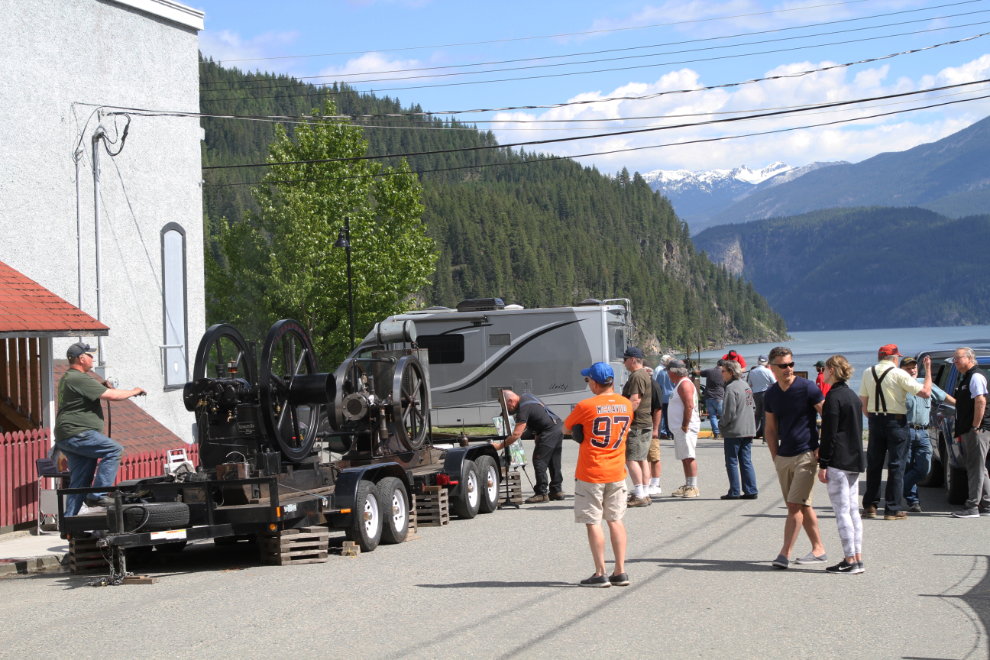
Pre-heating the fuel to get a Weber fired up.
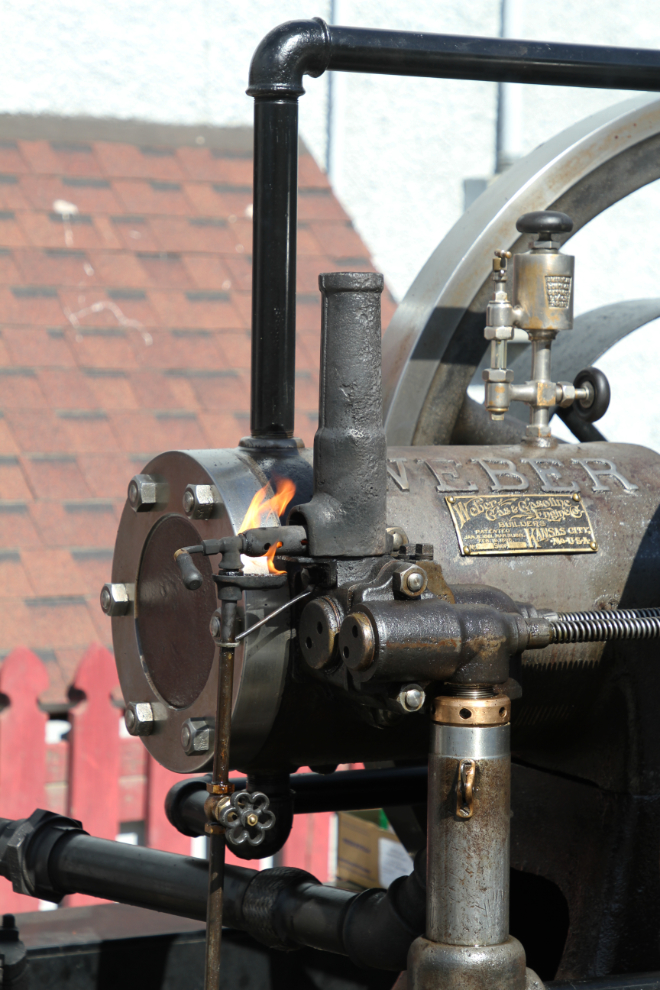
Derek Pollard recovered his first old engine from a Kootenays mountaintop over 40 years ago, and still loves working on them, even when they get cantankerous.
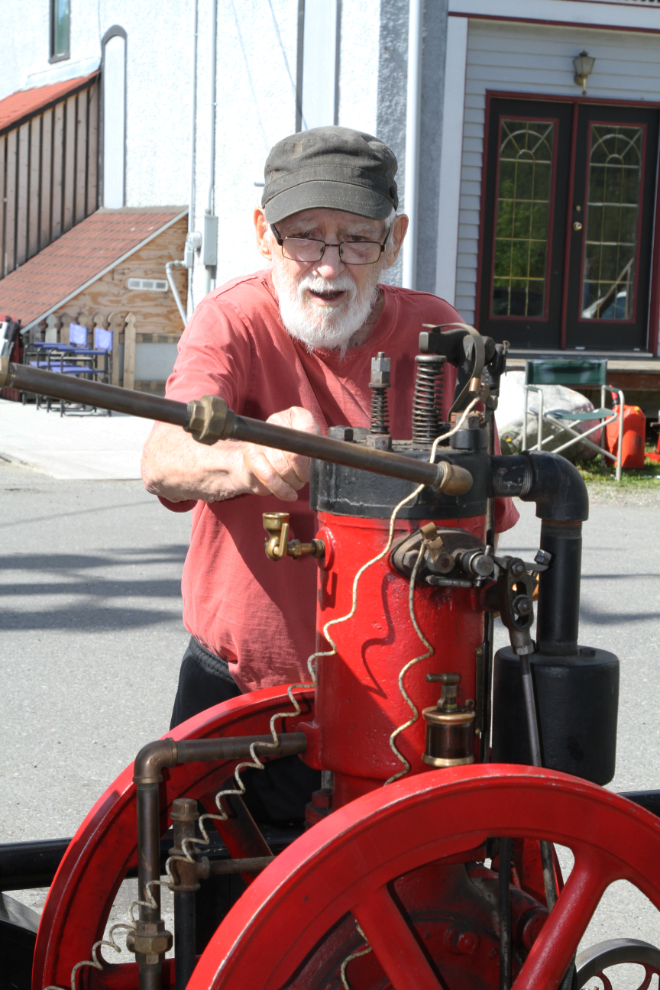
Some of the old engines are beautiful in their own way (especially some of the details), but when they get fired up, they’re really quite amazing.
